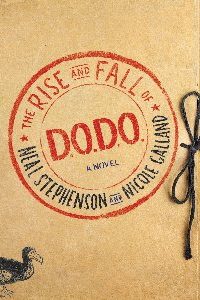Alex Brown Reviews The Reformatory by Tananarive Due
 The Reformatory, Tananarive Due (Saga Press 978-1-98218-834-4, $29.99. 576pp, hc) October 2023.
The Reformatory, Tananarive Due (Saga Press 978-1-98218-834-4, $29.99. 576pp, hc) October 2023.
The great Tananarive Due is back with her first solo, full-length novel since 2011 with The Reformatory. Set in the fictional city of Gracetown FL, where many of her stories take place, this one focuses on two Black children caught in the grinding gears of Jim Crow. Robert and his older sister, Gloria, were left behind in the care of community elders after their father was driven out of town. Local Klan members threatened to lynch him for agitating for labor reform and workers’ rights. While he holes up in Chicago, Gloria, a teenage girl, drops out of school to raise her younger brother until their father can make enough money to send for them. When a white boy, a descendent of the family that used to own Gloria and Robert’s ancestors, makes a pass at Gloria and young Robert physically defends her, that’s all it takes to get him sentenced to several months in the Gracetown Boys’ Reformatory.
Things aren’t so bad for Robert at first. He makes friends and is sent to work in the kitchen, a hard job but less arduous than working in the fields. But things quickly spiral out of control. The white man running the institution, Haddock, uses his prisoners as his own personal playground for torture, rape, and murder. His second in command, a Black man called Boone, delights in having power over others and uses that position not to protect his people but to make things infinitely worse for them. Once Haddock and Boone discover Robert can see haints, the spirits of some of the boys who died on the grounds of the reformatory, they put him to work catching them. With the haints and humans both threatening Robert’s life, he may not survive long enough to see his release date.
On the outside, Gloria runs herself ragged working through every legal avenue to get Robert out. She turns to the white people who call themselves allies, only to be met with shrugs and ‘‘I’m so sorry’’s. She turns to Black lawyers and the NAACP, but they only want big, splashy cases, and in the end are still just as subject to white violence as everyone else. The white men in town want to use Robert as a wedge to lure their father back to town and don’t care what happens to the boy in the meantime. As Gloria’s options dwindle and the threats increase, she makes a choice that will ripple through their lives in devastating, powerful ways.
When people write about the history and legacy of slavery in the South, they often talk about Georgia, Mississippi, Alabama, Louisiana, and the Carolinas. Florida, not so much. My ancestors were enslaved in Florida, and the state holds a lot of importance to this day in my family, so Due’s Gracetown stories have always appealed to me on a personal level. The place may be fictional, but my elders lived in towns and cities just like it… and encountered the same brutal, haunting racism. My ancestors’ blood, sweat, tears, and bones fertilized the soil, built the homes, tended the land, raised the white children, and everything else that needed doing. The state, hell, the whole country wouldn’t exist if it hadn’t been for them. The South is haunted by metaphorical specters of everything my ancestors suffered and survived. Due took that into the realm of the speculative by wondering what would happen if those specters were real.
Readers like me who are already familiar with reform schools in the South can probably guess the plot of The Reformatory. However, the real-world circumstances it’s pulling from in this case actually add to what makes the book so compelling. Being able to anticipate what’s coming doesn’t diminish the journey in getting there. Colson Whitehead’s 2019 novel The Nickel Boys was inspired by the Dozier School in Marianna, not far from where my family is from. Also known as the Florida School for Boys, it operated for 111 years, and for most of that time it was notorious for the rampant abuse, assault, and murder of Black and white boys. But it was far from being unique. Alabama had an Industrial School for Negro Children, also called Mt. Meigs, whose crimes became the subject of a recent podcast series, ‘‘Unreformed.’’ Arkansas had the Negro Boys Industrial School where 21 Black boys died in a fire in 1959 after being locked in a small room overnight. The boarding and residential schools where American and Canadian Indigenous children were sent under the philosophy of ‘‘Kill the Indian in him, and save the man’’ were not dissimilar to these Southern reformatories. When from the outset the people running these facilities believed the children under their care were pathetically unintelligent and useful only for labor or wild creatures needing to be tamed and civilized through physical force, it’s no wonder they both wound up with the same sadistic and tyrannical results.
The Reformatory contains subplots that may have been inspired by these other schools. The parallels with Dozier are glaringly obvious. Due’s character of Loehmann shares similarities with a white man called Denny Abbott from the mid 20th century. Both found themselves in the position of needing to use the privilege of their whiteness to try to protect vulnerable Black children. The novel also features a subplot where one of the men running the reform school was involved in a fire where several children were killed, likely a nod to the Arkansas incident. There are lots of other historical references that attuned readers and students of history will pick up. However, even if you know nothing about this slice of American history, Due provides enough context to situate readers.
Perhaps because I knew so much about reform schools and Jim Crow Florida, the novel felt more like history and less like horror. That said, there are plenty of horrifying scenes and images to satisfy horror readers. Vengeful ghosts and monstrous men lurk around every corner, as does the horror of everyday life. These people lived in a time when simply being Black in the presence of white people was enough to get you killed. There is real terror in a Black lawyer trying to advocate for his people in the snake pit of the white-dominated criminal justice system. One misstep or overstep could lead to an entire Black community being threatened or destroyed.
The Reformatory is peak Tananarive Due. If you like your horror with strong social commentary and deep connections to real history, you need this novel. Despite its length, I read it in just a couple days. I could not put it down!
Alex Brown is a librarian, author, historian, and Hugo-nominated and Ignyte award-winning critic who writes about speculative fiction, young adult fiction, librarianship, and Black history.
This review and more like it in the November 2023 issue of Locus.
 While you are here, please take a moment to support Locus with a one-time or recurring donation. We rely on reader donations to keep the magazine and site going, and would like to keep the site paywall free, but WE NEED YOUR FINANCIAL SUPPORT to continue quality coverage of the science fiction and fantasy field.
While you are here, please take a moment to support Locus with a one-time or recurring donation. We rely on reader donations to keep the magazine and site going, and would like to keep the site paywall free, but WE NEED YOUR FINANCIAL SUPPORT to continue quality coverage of the science fiction and fantasy field.
©Locus Magazine. Copyrighted material may not be republished without permission of LSFF.







